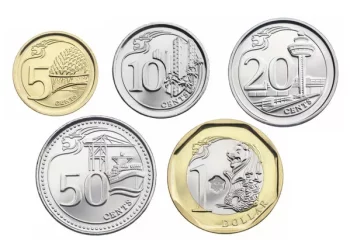The question “How much is 2000 dollars in rupees?” may seem straightforward, but it offers a gateway to understanding the dynamics of the foreign exchange market, the factors influencing exchange rates, and how fluctuations can impact currency conversions. This article explores these aspects in detail, providing insights into how exchange rates work, the current USD to INR conversion, and tips for effectively handling currency exchanges.
Understanding Exchange Rates
At its core, an exchange rate is the price at which one currency can be exchanged for another. For example, the USD/INR rate indicates how many Indian Rupees (INR) one US Dollar (USD) can buy. Exchange rates are vital in global trade, foreign investment, and international travel.
The rates fluctuate constantly due to factors like:
Economic Indicators: GDP growth, inflation, and employment rates.
Monetary Policy: Central bank interest rates and quantitative easing.
Political Stability: Investor confidence tends to favor politically stable nations.
Market Demand and Supply: The currency’s liquidity in the forex market impacts its value.
Global Events: Geopolitical crises, pandemics, or major policy changes can cause rapid rate swings.
USD to INR Conversion Rate: The Basics
The value of 2000 USD in Indian Rupees depends on the prevailing exchange rate. Let’s use an example:
Exchange Rate Example: Suppose the USD/INR rate is 82.50. This means 1 USD equals 82.50 INR.
Conversion: Multiply 2000 USD by the exchange rate. 2000×82.50=165,000 INR
However, this is a simplified calculation. The actual conversion you receive depends on factors like transaction fees, the spread between buy and sell rates, and the institution providing the exchange service.
Factors Influencing the USD/INR Rate
1. Economic Performance of the US and India
US Economy: A robust US economy with low unemployment and high consumer confidence typically strengthens the USD. For example, if the Federal Reserve increases interest rates, it may attract foreign investments into US assets, boosting the dollar.
Indian Economy: India’s economic indicators, such as GDP growth and inflation rates, directly impact the rupee’s strength. High inflation can weaken the INR, while reforms and foreign direct investments (FDI) can bolster it.
2. Global Events
The Russia-Ukraine conflict in 2022, for example, led to volatility in the forex market, impacting currencies like the INR. Similarly, oil price shocks significantly affect India, a major oil importer.
3. Central Bank Policies
The Reserve Bank of India (RBI) and the Federal Reserve play a key role. For example, if the RBI intervenes to stabilize the rupee by selling foreign reserves, it can impact the USD/INR rate.
4. Trade Balances
India’s trade deficit (when imports exceed exports) often exerts downward pressure on the INR. Conversely, a surplus can strengthen the rupee.
Tools to Check Exchange Rates
1. Online Currency Converters
Websites like XE, OANDA, and Google provide real-time exchange rates. However, these are often the mid-market rates, which may differ from retail or bank rates.
2. Forex Platforms
Many forex trading platforms provide live charts for USD/INR. These platforms also allow speculation on future rate movements.
3. Bank and Money Exchange Rates
Banks, currency exchange services, and fintech apps like Revolut or Wise usually quote slightly higher rates to account for transaction fees.
Calculating the Exact Value of 2000 USD in INR
Let’s break down the conversion process to understand how fees and spreads can alter the final amount.
Mid-Market Rate
As of today, let’s assume the mid-market rate for USD/INR is 82.50.
Simple Calculation: 2000×82.50=165,000 INR
Bank or Exchange Service Rate
Banks or exchange services often charge a spread. For example, if the buy rate is 82.50 but the sell rate is 83.00:
Actual Calculation: 2000×83.00=166,000 INR
Transaction Fees
Many services charge fees of 1–3% for currency conversion. A 2% fee on 2000 USD equals 40 USD:
Final INR Received: (2000−40)×82.50=161,700 INR
Dynamic Rate Fluctuations
Forex rates can fluctuate even within minutes. If the rate changes to 83.50 while your transaction is pending, the final amount will differ.
Practical Applications of USD to INR Conversions
1. Travel
Travelers frequently exchange USD for INR. Using credit or debit cards abroad may also incur dynamic currency conversion (DCC) fees, which are often higher than exchange rates.
2. Remittances
Millions of Indians working overseas send money home, making USD to INR conversions critical. Services like Western Union, MoneyGram, and online apps like Wise are commonly used.
3. Investments
Investors in foreign stocks, ETFs, or real estate need to monitor exchange rates. A strong USD can make US investments more expensive for Indian investors.
4. Forex Trading
Traders speculate on currency pairs like USD/INR to profit from rate fluctuations. Strategies include:
Carry Trade: Borrowing in a low-interest-rate currency and investing in a high-yielding currency.
Hedging: Businesses with USD exposure often hedge to mitigate risks from unfavorable rate movements.
Tips for Getting the Best Exchange Rate
Compare Rates
Check rates from multiple banks, exchange services, and apps.
Avoid Airport Exchanges
Airport kiosks often have the worst rates due to high convenience premiums.
Use Forex Cards
Preloaded forex cards lock in favorable rates and avoid dynamic conversion fees.
Monitor the Market
Timing can be crucial. Rates often dip or rise due to specific global events.
Opt for Online Platforms
Apps like Wise and Revolut often provide better rates compared to traditional banks.
Conclusion
The value of 2000 USD in rupees depends on the prevailing exchange rate, which is influenced by various factors, including economic indicators, central bank policies, and global events. By understanding these dynamics and leveraging tools like online converters and forex platforms, individuals and businesses can optimize their currency conversions.
As of the latest rates, converting 2000 USD may yield approximately 165,000–170,000 INR after accounting for transaction costs. Whether you’re a traveler, investor, or trader, staying informed about forex market trends is essential to making the most of your money.
Related Topics:




























